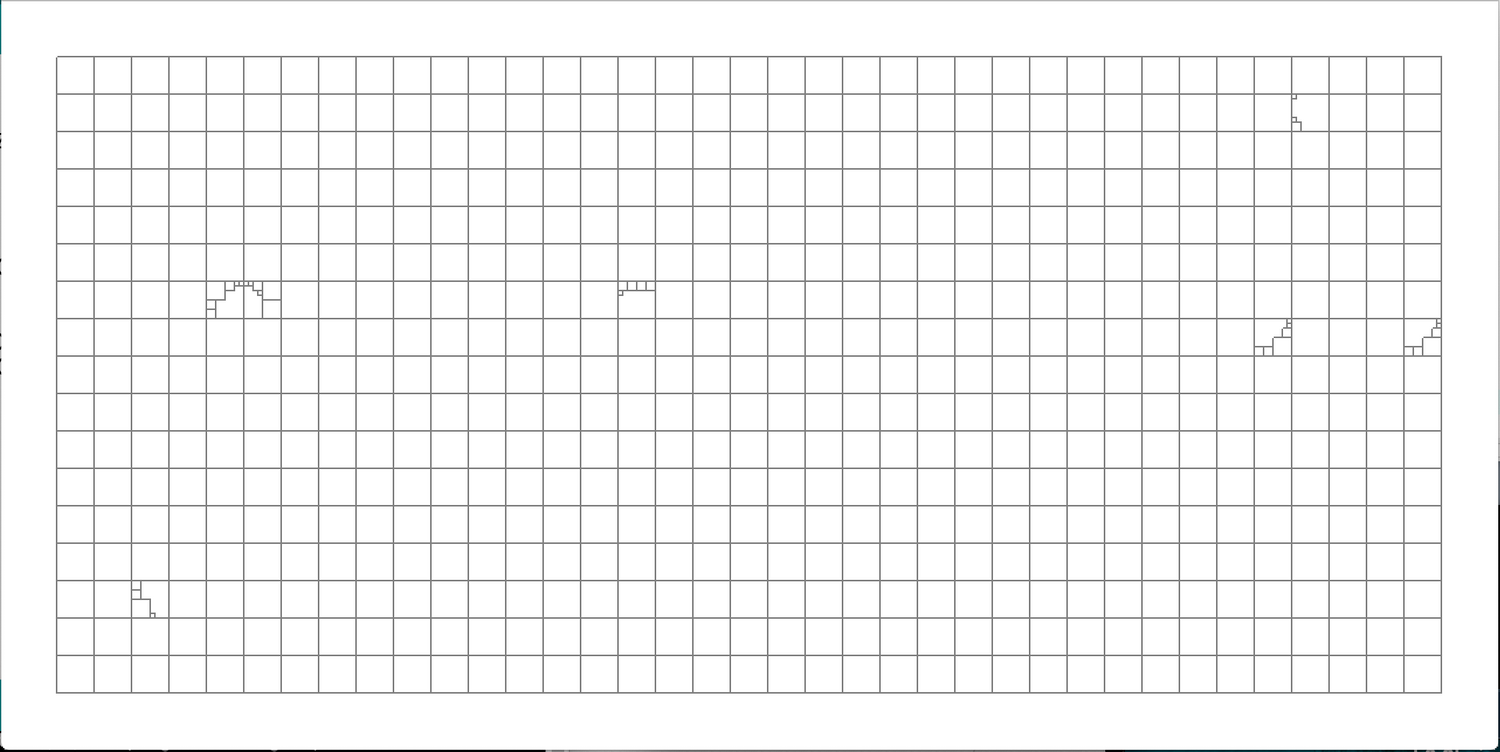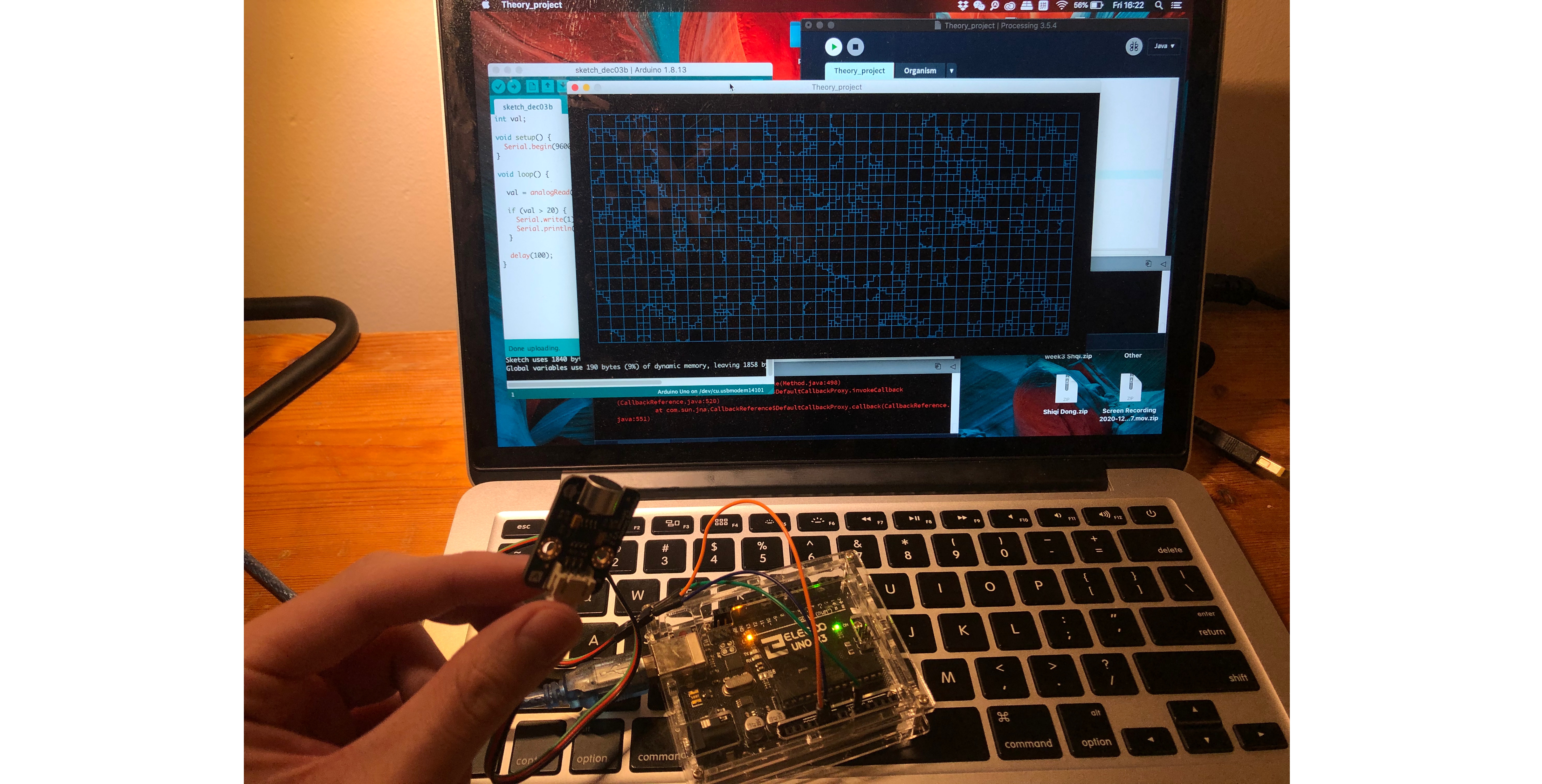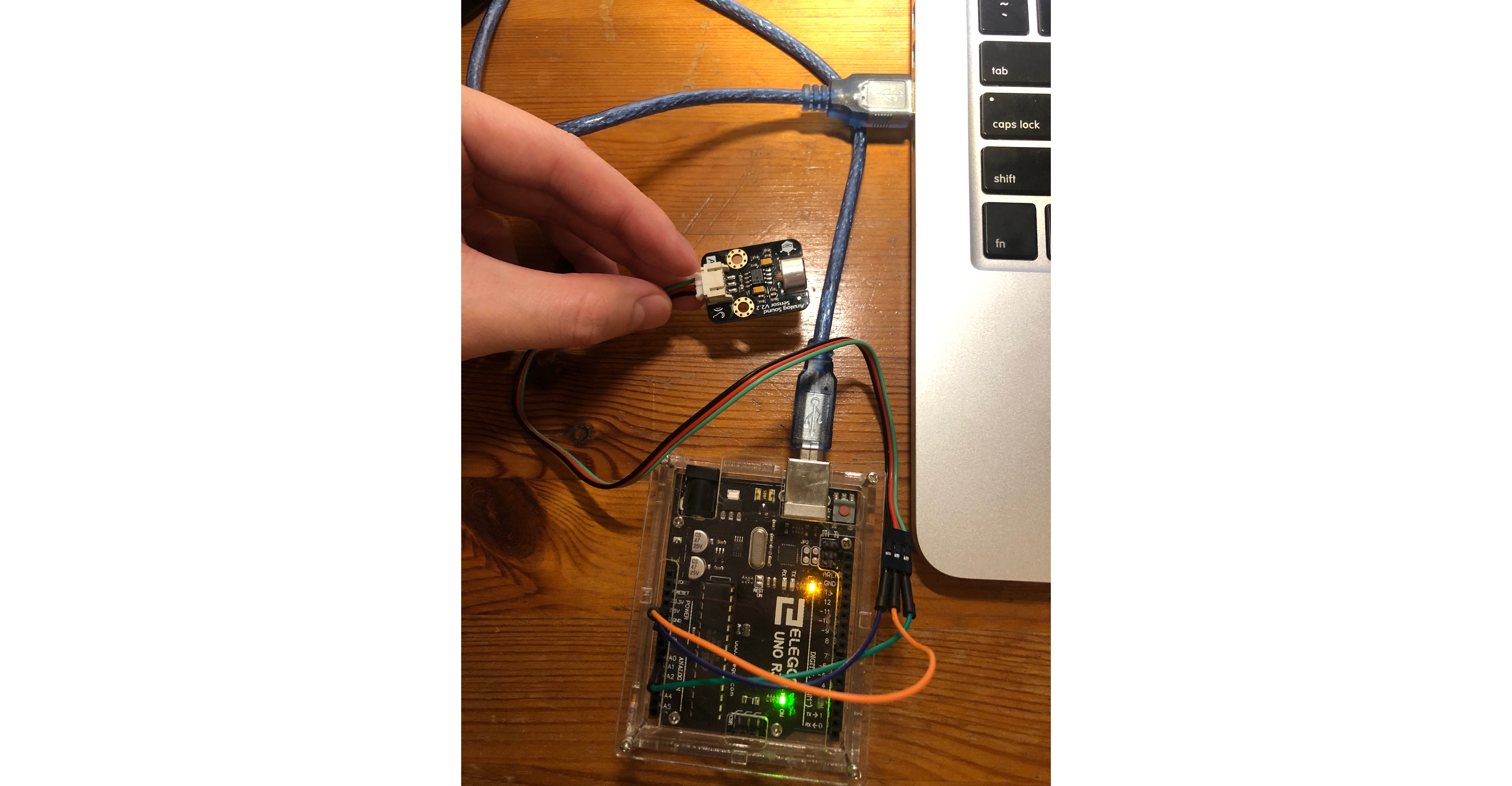Sensory Compound:Human, Jellyfish, and the Digital Ocean
By:Yuting Zhu, Zhichen Gu, Yue Chen, Haotong Qu, Shiqi Dong
This project explores the possibility of a Sensory Compound - a cyborg mixture of human, animal, and computational sensory organisms -and how to define its situated identity.
Our artefact is a conceptual installation of a space/environment consisting of three symbolic components: Human, Jellyfish, and an algorithm modified from Conway's Game of Life. The space itself - which we call the Ocean - is defined as a compound organism, interweaving humanly, naturely, and digital forms in a speculative, apocalyptic scenario. Breaking down the components, we observe the compound as regards each individual party's synaesthetic loop with one another and the overarching dynamics they manifest in reaction to the caprice of living resources.
Conceptual context
Adopting Donna Haraway's idea of a cyborg, Pramon K. Nayar's framework of posthumanism, and Jean-Pierre Ternaux's conception of synesthesia, we decided to make our own attempt at this exciting idea of a non-anthropocentric compound - an organism that merges senses from human, animal, and machine into a situated mutualism, whose synaesthetic process can be seen as a posthuman life form's attempt to adapt to its environment.
Inspired by an intriguing fact that jellyfish thrives because of human activity despite environmental crisis, we envisaged an apocalyptic scenario for the narrative of our compound. At the end of the world, the last human striving to survive might have to evolve and merge with the organs and sensory mechanisms of jellyfish in order to adapt to the capricious environment - which, presuming in the future, means both a physical and digital ocean. A new organism therefore emerges: one that incorporates human, jellyfish and the environmental living resources they are constantly adapting to and living off.
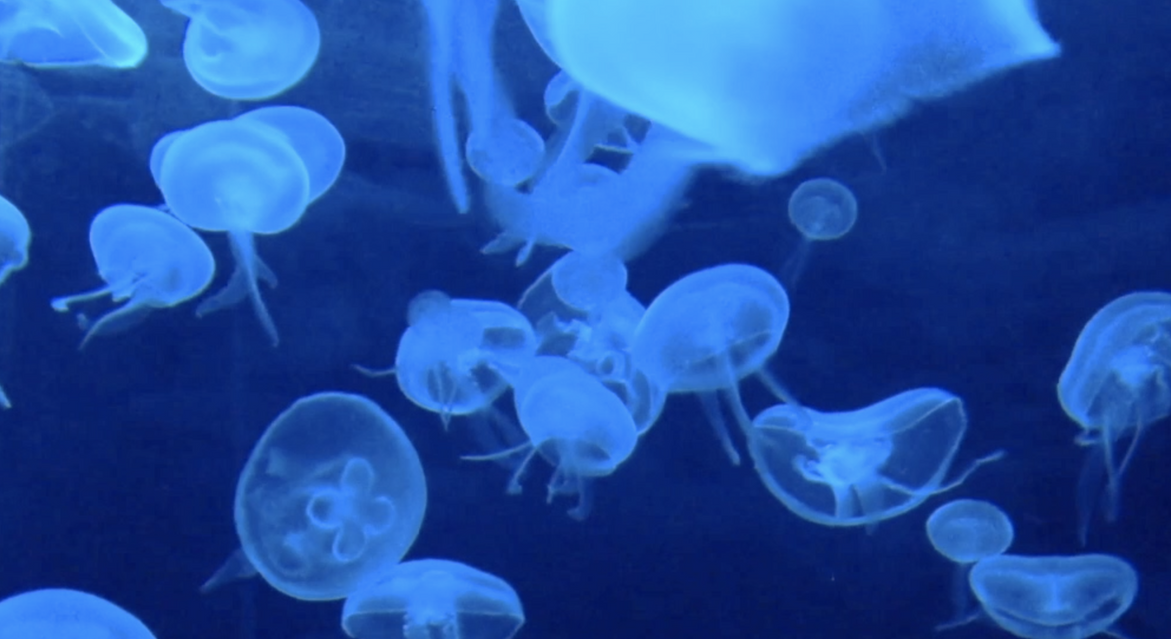

Components & Technical Setup
1) Human: The first component, human, represents the traditional flesh-and-bone form. We use breathing to refer to the emission of CO2 which symbolizes the industrial, productive, and living activities that have been imposing human influence on the reproduction of jellyfish.
2) Jellyfish: The second component, jellyfish, represents the non-human animal from nature as well as a minimal sensory organ. Jellyfish gather and disperse based on their perceptions of the current and oxygen level in the water - where sea water is warmer, jellyfish thrive. In this sense, we could see jellyfish and humans as two species that coexist with and compete against each other at the same time for living space and resources.
3) Algorithm: The third component, an algorithm modified from Conway's Game of Life, represents a cyberspace as well as a digital organism. The original Game of Life follows these recursive rules of life: cells die from underpopulation and overpopulation, and reproduce the next generation when living space is just right. We, then, added in the human and jellyfish factors: the more frequently human breathes, the more life units appear in the digital ocean.
4) Technical setup: Due to the time restriction and the lockdown situation, our former plan to make an installation filling a certain space had to be simplified. So, we decided to use a small digital composition along with video footages to illustrate our idea. For the algorithm section, we used Arduino and sound sensor as the input device and connect it to our laptop with the programme written in Processing. The analogue signal from the sensor can be transmitted into the processing programme, then as a variable value to affect the behaviour of the digital jellyfish. Thus, we aimed to recreate the dynamics within the compound organism in a digital environment.
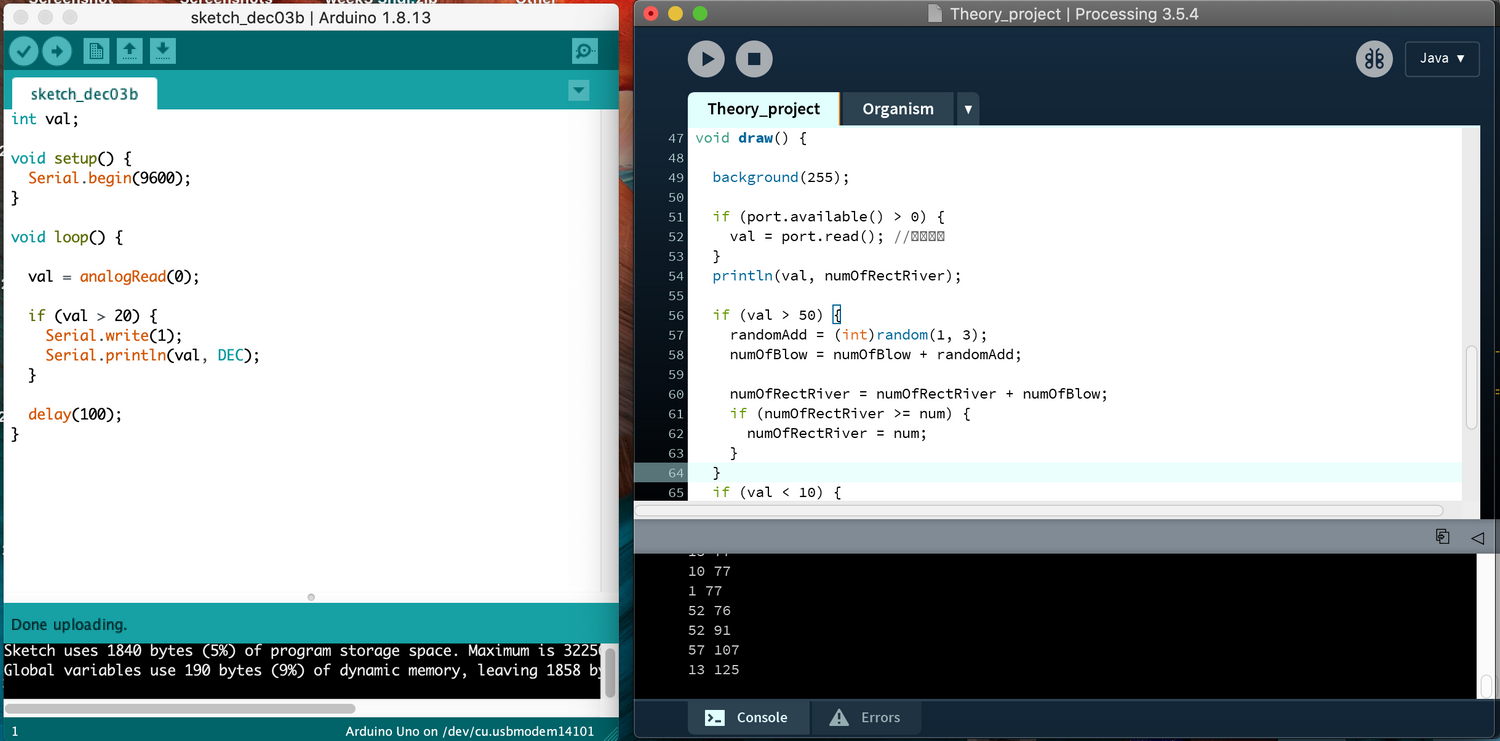
Throughout the conception, we adhered to our second core research question: how to create a compound independent of human subjectivity? This question can be understood in two ways.
The first is, how to differ from the conventional sense of cyborg that either enhances, extends, or substitutes parts of the human body, and instead, to renounce the focus on the human body as a framework? Our attempt is to assume space as a compound organism. According to Le Corbusier's Ville Radieuse (1930), space is a bridge to connect and reunite human within an environment. Its inclusiveness and inherent binding power offers a perfect arena for components to co-exist and develop both internal dynamics and external interactions with the environment, without being contained in the idea of a "whole". The human body is no longer the centrepiece, but becomes a participator in an organism.
The second is, how to prevent the existing human values, experience, and biases from dominating the creation of a non-anthropocentric compound? Even at the very end of our project, we still cannot judge ourselves in this respect, but it remains an acute question to self-reflect. We were reminded of the reason why this reflection is so important to us, which could be traced back to our motivation for the project. Our interests tied closely with the common concern around the surge of AI and algorithms. As it is often worried that algorithmic characteristics have the potential to corrupt humanity, this very idea implies that humanity is more worthy of preservation than the values of any other species (natural or virtual). Our attempt at composing a compound independent of human subjectivity lied exactly behind the motivation to explore alternatives. By de-canonizing humanity, or more precisely, by dissolving and expanding the scope of humanity, we attempted to envisage an opener space for a truly in-depth merge between human, machine, and physical-digital sensory interactions with our living environment. In other words, to pave for a smoother journey into the future.
How do we situate and identify the compound we've tried to make?
— Where human ends and machine begins.
For more detailed written documentation, including four case study blogs, please see our website:
References
Biro, M., n.d. The Dada Cyborg.
Coeckelbergh, M., n.d. New Romantic Cyborgs.
Cregan, K., n.d. Key Concepts In Body And Society.
Dixon, S. and Smith, B., 2015. Digital Performance. Cambridge: The MIT Press.
Erickson, M., 2004. Natural-Born Cyborgs: Minds, Technologies, and the Future of Human Intelligence (review). The Canadian Journal of Sociology, 29(3), pp.471-473.
Foucault, M. and Sheridan, A., n.d. Discipline And Punish.
Ghertner, D., McFann, H. and Goldstein, D., n.d. Futureproof.
Gray, C., n.d. Cyborg Citizen.
Haug, H., Kaegi, S. and Wetzel, D., 2020. Win > < Win. [online] Rimini-protokoll.de. Available at: [Accessed 1 December 2020].
Haraway, D., 1991. A Cyborg Manifesto: Science, Technology, and Socialist-Feminism in the Late 20th Century. [ebook] London: Free Association. Available at: [Accessed 22 November 2020].
Hayles, N., 2010. How We Became Posthuman: Ten Years On An Interview With N. Katherine Hayles. [ebook] Edinburgh: Edinburgh University Press, pp.318-330. Available at: [Accessed 26 November 2020].
Henderson, C., 2012. The book of barely imagined beings: A 21st century bestiary. [ebook] London: Granta Books. Available at: [Accessed 22 November 2020].
Marco Donnarumma. 2020. Eingeweide. [online] Available at: [Accessed 2 December 2020].
Nayar, P., n.d. Posthumanism.
O'Connell, M., n.d. To Be A Machine.
Ternaux, J., 2003. Synesthesia: A Multimodal Combination of Senses. Leonardo, 36(4), pp.321-322.
Terracciano, A., 2017. 7 Cities in 7 Minutes: A feminine paradigm of sensory art. Body, Space & Technology, 16(0).
White, E., 2015. Gilles Deleuze and Félix Guattari: Intersecting Lives. The European Legacy, 20(8), pp.864-866.
Xu, Z., 2020. Choreography of Sonic Chopsticks and Intervention of Digital Technology with Dancing Bodies. Body, Space & Technology, 19(1), p.56.
































































